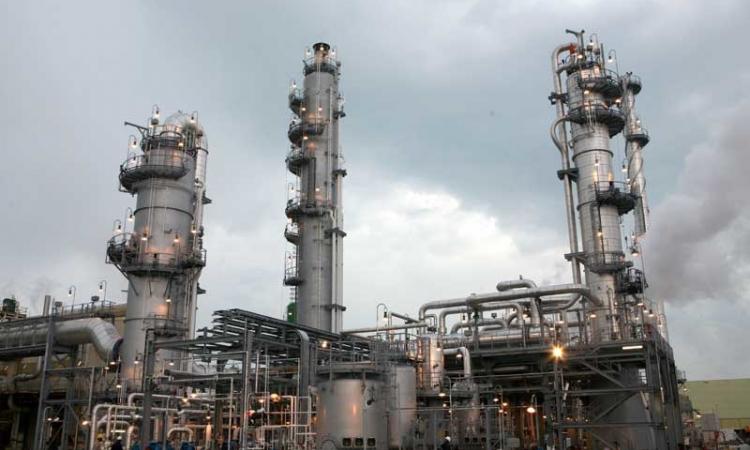
Centre for Science and Environment (CSE), a New Delhi based non-profit has rated the country’s fertilizer sector on several parameters, in a first of its kind study. The rating, done over an 18-month-long process, covered 28 of the 32 functional fertilizer units in the country. The findings of this green rating project were shared during the release of this rating report on 29th July, 2019 in New Delhi.
“Groundwater pollution is a serious problem and the plants need to be held accountable. The government will look into excessive groundwater use and nitrogen pollution caused by fertiliser plants and will find a way to address the issues,” said Prakash Javadekar, Union Minister for Environment, Forests and Climate Change while releasing the report.
The report reveals that while some fertiliser plants such as Yara Fertilizers in Uttar Pradesh are among the best in the world in terms of energy efficiency and greenhouse gas emissions, the sector as a whole fared poorly on other environmental parameters, especially water consumption and water contamination. Some plants were also adversely affected by depleting water sources.
Overall, the sector scored 43% in energy use and greenhouse gas emissions. On an average, the plants surveyed consume nearly 30 percent higher energy than the global best practice of 4.8 GCal/tonne. Emissions from production are only a small part of the greenhouse gases released from fertilisers.
The bulk of carbon dioxide as well as potent nitrous oxide emissions come from the use of fertilisers in the field. The fertiliser industry emits air pollutants such as particulate matter and oxides of nitrogen, sulphur and carbon dioxide.
“CSE has been rating industrial sectors through its Green Leaves Award with “5 Leaves” recipients being the best performers. The fertiliser sector received a score of 42% and “3 Leaves”— an average performance. The comprehensive analysis based on parameters that cover the complete life cycle of the fertiliser industry found that the Indian fertiliser sector was among the best in the world in energy use and GHG emissions. The fertiliser sector as a whole has turned out a better performer than any of the other sectors rating by green rating project so far,” said Chandra Bhushan, CSE Deputy Director General who also heads the green rating project.
What is worrying is that there is a significant performance gap between the plants. Most plants need to upgrade on site and off site disaster management. Of the 23 urea plants rated, only one - Grasim Industries Ltd’s Indo-Gulf Fertilizers unit at Jagdishpur, Uttar Pradesh managed to bag the “4 Leaves” award with a score of 61%. This plant received the award for its superior performance in energy use and GHG emissions, its good environment, health and safety measures, and social responsibility, and above all, its transparency in sharing information.
The next three winners were Hazira (Gujarat) unit of Krishak Bharati Cooperative Ltd., Panambur (Karnataka) unit of Mangalore Chemicals & Fertilizers and the Babrala (Uttar Pradesh) unit of Yara Fertilizers India. About two-thirds of the plants received “3 Leaves” while four plants received just “1 Leaf”. The sector was found to be relatively non-transparent -National Fertilizers Limited and Indian Farmers’ Fertilizer Cooperative Limited, the biggest public sector companies, outright refused to voluntarily participate in the process. Nevertheless, they were rated based on secondary information.
Sector’s record on water pollution concerning
 The study found that the Indian fertiliser industry’s ratings slipped on water consumption and water pollution parameters. Production of fertiliser is a moderately water intensive process and as per the rating the sector obtained an average score of 40 percent in water use efficiency. The plants were rated on indicators like water sourcing, trends in specific water consumption, groundwater stress, water accounting and reporting, cooling tower technology and rainwater harvesting.
The study found that the Indian fertiliser industry’s ratings slipped on water consumption and water pollution parameters. Production of fertiliser is a moderately water intensive process and as per the rating the sector obtained an average score of 40 percent in water use efficiency. The plants were rated on indicators like water sourcing, trends in specific water consumption, groundwater stress, water accounting and reporting, cooling tower technology and rainwater harvesting.
As per the report, “the average specific water use was in the range of 4.55 cubic metres/tonne to 12.73 cubic metres/tonne of urea produced. Based on sector-wise comparison, public sector plants have the highest average specific water consumption of 8.13 cubic metres/tonne urea produced in which plants with coal-based captive power plants are the most inefficient. Use of groundwater is surprisingly high with about 26% plants relying on it. Four plants, all in Uttar Pradesh, rely entirely on groundwater. Together, these plants account for 94% of groundwater consumption by the urea manufacturing sector.”
Areas surrounding at least one-third of the fertiliser plants were found to have very high levels of nitrogen in groundwater.
Wastewater generated at urea plants contains ammoniacal and Kjeldahl nitrogen, and cyanides in varying concentrations, which can lead to groundwater and surface water pollution, if not treated properly. The process condensate generated from the urea section (containing urea, ammonia and carbon dioxide) and oil-bearing effluent from pumps and compressors causes water pollution. So do plant utilities such as cooling tower blow-down, demineralised regeneration and water treatment plant back-washing.
As per the report “about 57 percent samples collected near 14 plants were found non-compliant with fertiliser effluent discharge norms set by the MOEF&CC, particularly with respect to cyanide concentrations in many of the samples and total Kjeldahl nitrogen levels in a few samples. About 83 percent groundwater samples collected near 18 plant sites had an ammoniacal nitrogen content of 0.51–93.5 parts per million (ppm), the upper limit of which is 187 times the permissible limit of 0.5 ppm for drinking water set by the Bureau of Indian Standards.”
As a part of their mandate to recycle used water, the plants were also using it to water horticulture and other crops in their premises. This led to nitrogen seeping into the water table, with nitrogen pollution being a huge concern. Some plants were getting affected simply because of lack of water.
And it isn’t just limited to production of fertiliser.
The widespread use of urea, a commonly used fertiliser in the agriculture sector, has led to alarming levels of nitrogen pollution of surface water and groundwater in many Indian states. Excess levels of nitrogen damage the environment and people's health globally.
The way forward
“The bottom line is that the fertiliser industry in India stands at a cross-roads today. The biggest issue it is grappling with is the future of nitrogenous fertilisers itself. India is the second largest producer, importer and consumer of these fertilisers (mainly urea), and with nitrogen pollution reaching alarming levels, the industry needs to rethink the way it produces and sells fertilisers,” said Sunita Narain, Director General, CSE.
The report calls for the government to liberalise the industry to make it more competitive, potentially leading to greater efficiencies and more environmentally sound production practices. The overall financial health of the sector is poor with even the best performing companies having profitability far lower than their peers in other core sectors of the economy.
The CSE report stresses the need to improve the environmental performance of the sector through multi-directional initiatives. To reduce its water footprint, plants could invest in rainwater harvesting within and outside the premises to recharge groundwater and become water-neutral. Further, plants should try to achieve zero liquid discharge status. Plants currently use fossil fuels to produce fertilisers, but could switch to renewable sources.